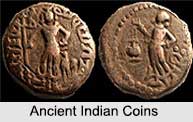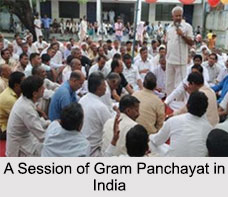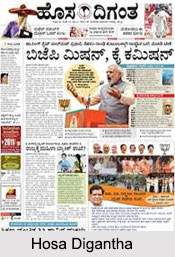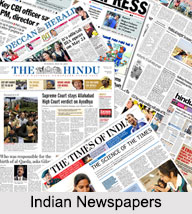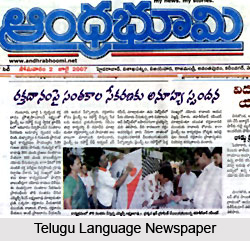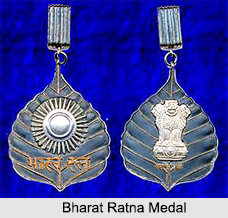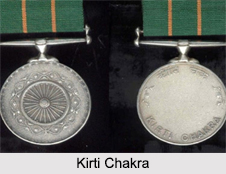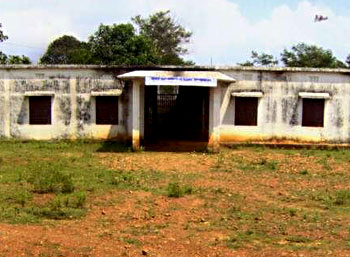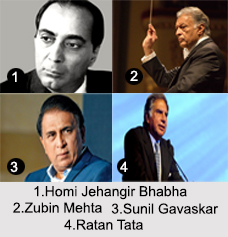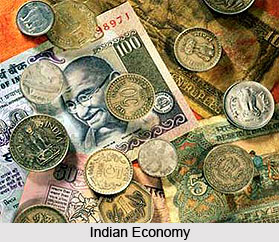 The Indian economy is diverse and embraces a huge area including, agriculture, mining, textile industry, manufacturing and a vast array of other services. There is an enormous shift from what the economy used to be in the distant past. Indian economy is the third largest in the world, as measured by "purchasing power parity"(PPP). Still now two thirds of the population thrives on agriculture directly or indirectly. Indian economy is somewhat socialistic in its approach though nowadays there is a change that has taken place and we see India on the run with other capitalist countries.
The Indian economy is diverse and embraces a huge area including, agriculture, mining, textile industry, manufacturing and a vast array of other services. There is an enormous shift from what the economy used to be in the distant past. Indian economy is the third largest in the world, as measured by "purchasing power parity"(PPP). Still now two thirds of the population thrives on agriculture directly or indirectly. Indian economy is somewhat socialistic in its approach though nowadays there is a change that has taken place and we see India on the run with other capitalist countries.
Pre-Colonial History:
Pre-colonial implies to the period before the advent of the British. In this context, Indus Valley Civilization is considered to be the first of the permanent settlements in the urban areas. They usually practiced varieties of trades, which included agriculture, domestication of animals, making sharp weapons from copper, bronze and tin and inter-city trading. Barter system was commonly in use in these times although many kings issued coins and revenues were also paid to the rulers.
Calicos, muslin,shawls, pepper, opium, cinnamon and indigo were exported to Europe, the Middle East and South East Asia in exchange of gold and silver.
India was predominantly agrarian in economy with some dependence on obsolete technology until the British took over. The rise of the Maratha Empire after the fall of the Mughals, marked the decline of political stability affecting Indian economy.
Colonial History:
Colonial rule brought along with it enormous change in the economic structure of the country. The whole process of taxation was revised, with adverse effect on the farmers, a single currency system with fixed exchange rates, `standardized` weights and measures, free trade was encouraged and a kind of capitalist structure in the economy introduced. In the west there was already industrial revolution gearing up which also had its silhouette over India as well. Basically the raw materials and man power was exported back to their home country and this caused a setback among the millions of teeming Indian population for whom the policies were not much favorable.
The finished goods were then brought back to India and sold at high rates among the well to-do people. Other developments in transport and communication like introduction of railways, telegraph and so on was made which in a way affected the economy.
Towards the end of the colonial rule it was seen that development in the Indian economy was hampered and it was reduced down from its glorious strong economic background.
Post Independence History:
There was a basic stress on a few things like protectionism, import substitution, industrialization, a large public sector, business regulation, state intervention in labor and financial markets and central planning.
The economy of the country shifted from predominantly agricultural, forestry, fishing and textile manufacturing in 1947 to major heavy industry, telecommunications and transformation industries by late 1970s.
In the 1950s the Indian government undertook a chain of plans for the economic development. These plans functioned profitably for a while but then again in the long run they showed lese development. Since 1950s trade deficit problems arose leading up to a problematic situation in the 1960s like inflation. 3.1 percent was the average rate of growth a year in constant prices from FY 1951-FY 1979. Economic doldrums were a result of structural inadequacies, wars with China in 1962, with Pakistan in 1965 and 71, currency devaluation in 1966, first world oil crisis and few natural calamities.
Contemporary Economy
Reforms in the economy were being made, which included the pro-business measures of 1980, initiated by Rajiv Gandhi, relieved restrictions on `capacity expansion for incumbents`, removal of price controls and reduced corporate taxes. 1991 marked the economic liberalisation initiated by the then Indian prime minister P. V. Narasimha Rao and his finance minister Manmohan Singh which was in response to a balance-in-payments crisis. Other changes like the abolition of the License Raj, public monopolies, allowance of automatic approval of foreign direct investments in many sectors. 1990 onwards we see the emergence of India as one of the wealthiest economies of the world with a constant growth of economy with only very few major knock backs. More private sector initiatives were taken up during during 1980s and 1990s.
At present India has a modern stock exchange instead of an outdated one. There has been a rise in the IT sector lately, the settin ups of the Indian Institutes actually led to the influx of highly qualified manpower resources harnessing the economy of the country.
There seems to be no sign of balance of payments crisis in India from a superficial level. Having a reserve of $130 billion, there is huge optimism in India. Finally it has got some ground in the world economy and the growth is on the move.
State planning and the mixed economy:Indian economy works on the basis of 5 year Plans which enables an effective and equal distribution of national resources for a balanced economic development.
Mixed economy is a merger of the socialist and capitalist economy. India"s mixed economy has switched roles embracing capitalist economy to greater extent over the past decade. In India the public sector covers the railways and postal services. Nationalisation of banks have also taken place, recently phases of privatisation are on the run.
Public expenditure: Public expenditure in India basically constitutes capital and revenue expenditure. These are included in central plan expenditure, central assistance and non-development expenditure.
Central plan expenditure is for the allocation of resources in development schemes given in plans of the central government and public sector undertakings. Central assistance is the aids provided for plans of state governments and union territories. Capital defence expenditure, loans for public enterprises, states and union territories and foreign governments fall under non-development capital expenditure. Whereas non-development revenue expenditure consists of revenue defence expenditure, subsidies, postal deficit, administrative expenditure, pensions, debt relief to farmers etc.
Public receipts: Tax system has undergone serious changes or reforms over the years. The Union govrnment levies income tax, sales tax, custom and excise duties, the State government levies sales tax on intra-state sale of goods, entertainment, alcohol, transfer of property etc., and local government extract taxes from property, public utility services, etc. therefore more than a quarter of the union government"s tax revenues is commonly used with the state governments. Central government receives non-tax revenues from fiscal services, public sector dividends etc, whereas state government"s non-tax revenues come from grants, interest receipts, and other economic and social services.
General budget: The general budget of India is presented by the Finance Minister in the Parliament which is passed by the Lok Sabha. It comes to effect on April 1, and the budget is presented on the last working day of February. An economic survey is conducted after the budget which involves various NGOs, business people, women organisation and so on.
Rupee:
Indian currency "rupee" is derived from Sanskrit meaning silver and was first introduced by Sher Shah Suri during his reign from 1540-1545 CE as history puts it. Since the british period this coin has been used as a standardised currency for economic purposes. These days Rupee currency comes in denominations of 1, 2, 5, 10, 20, 50, 100, 500 and 1000. Rupee is the only payment of debt accepted in India.
Natural resources:India has rich reserves of natural resources. The water surface area is 314,400 km² out of which 92 percent of water is utilised for irrigation purposes, this is supposed to rise by the year 2025. Being the 5th largest producer of fish in the world, India"s inland water resources constituting canals, rivers, lakes, ponds etc of the Indian Ocean, gulf and bays offer employment to almost 6 million people in fisheries sector.
Other natural resources in India include mineral resources. Coal ironore,mica, manganese, bauxite, natural gas, chromite, petroleum, diamonds, limestone and thorium(world"s largest along Kerala"s shore) are the major availabilities of minerals here. Of which India has the 4th largest reserve of coal in the world.
Financial institution: The Reserve Bank of India, Bombay Stock Exchange and the National Stock Exchange is located in Mumbai which is the commercial capital of India. To offer tax benefits and better infrastructure for settting up business, Special Economic Zones and software parks has been set up by India.
India"s rmonitory regulator, authority and supervisor of the financial organisation is the Reserve Bank of India, which is the country"s central bank. The RBI issues currency and is also the manager of exchange control.
The BSE Sensex is a "value-weighted" index formed of 30 companies, which are representative of various sectors on the Exchange. The BSE is referred to as the "barometer" of the Indian stock markets.
The National Stock Exchange is the world`s third largest stock exchange in terms of transactions, and the mammoth and most advanced stock markets in India.The stock markets and other security markets of India are regulated by The Securities and Exchange Board of India.
Sectors:
agriculture:India was predominantly an agricultural economy until in the past years it somewhat transformed according to world economies. India occupies the second positon in the world in terms of farm output. 18.6% of the GDP in 2005 was contributed by agriculture and related sectors like fishing, forestry and logging and provided employment for 60% of the total workforce. Since 1950, per unit are of production has increased due to the five year plans and improvements in irrigation, modern agricultural practices, technological advancements, subsidies and agricultural loans since the "green revolution".
Industry:With time there has been enormous reforms made in the industrial sector. There has been privatisation of certain public sector industries which led to the expansion in the production of consumer goods. The industrial sector involves the transport, provision of a service, such as in pest control or entertainment, distribution and sale of goods from producer to a consumer as may happen in wholesalingand retailing,etc.India ranks 14th in the world in factory output, acounting for 27.6% of the GDP and employing 17% of the total working force.
Services:The service industry in India provides employment to 23% of the workforce. It has a massive share in the GDP, amounting to 53.8% in 2005 up from 15% in 1950. India takes the 15th position in services output. Information technology, business process outsourcing etc fall among the briskly growing sectors adding up to one third of the total output of services in the year 2000. The service sector in India is provided with a very good infrastructure and reduced communication cost, making it pretty powerful in this sector.
Banking and Finance:The banking system in India is broadly organised and unorganised. Among the organised sector it incorporates public, private, foreign owned banks, and the unorganised sectors comprise of individual/family owned bankers or money lenders, and also non-banking financial companies(NBFCs). There has been an increase in the number of bank branches, including rural areas.
Reserve Bank of India is the agency for al policy matters, and is very important in terms of strengthening Indian economy.
Liberalisation gave way for reforms in the banking system. These reforms were made in the nationalised banks as well as in the insurance sectors, private and foreign concerns.
Major public sector banks in india are Allahabad Bank, State Bank of India, Andhra bank, Bank of India etc. Private sector banks include UTI bank, Bank of Punjab, HDFC bank etc. Standard Chartered Bank, ABN AMRO bank and such others are the multinationals in India.







